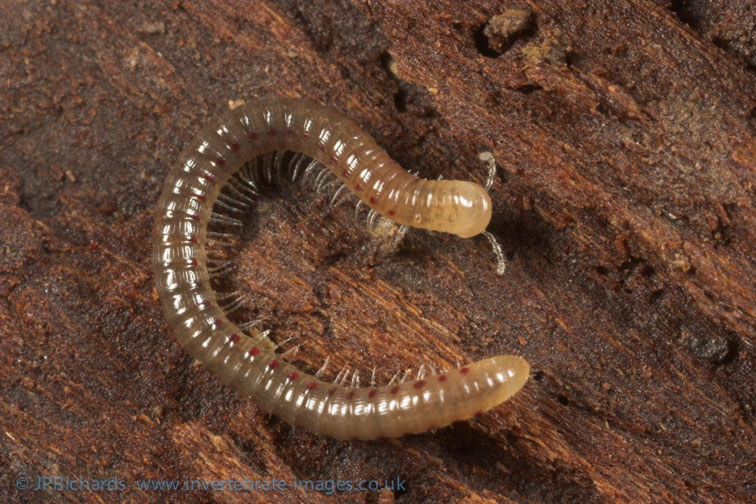Metaiulus pratensis Blower & Rolfe, 1956
Status:
- GB IUCN status: Endangered
- GB rarity status: Nationally Rare
ID Difficulty
Identification
A blind species, entirely lacking ommatidia (eyes). It could be confused with Cylindroiulus vulnerarius (which is a similar colour and also lacks ocelli) or even Blaniulidae, such as Blaniulus guttulatus, which are much more slender and lack dorsal body striae.
Distribution
This species was described as new to science from specimens collected in Kent and Sussex between 1939 and 1951 (Blower & Rolfe, 1956). It remains restricted to the extreme south east in England and appears to have undergone a severe decline even within this limited range over the last 25 years.
Metaiulus pratensis remains a rarity in Europe. It has a strict Atlantic distribution occurring only in south east England and south west France on current knowledge. Thus the British populations of this millipede are of international importance.
Habitat
Habitat details were submitted to the recording scheme with just two records hence there were insufficient ecological data for analysis. However, many of the records of this millipede are from arable land on heavy clay soils (Blower 1985). Between 1986 and 1988, it was found in a wetland and in four woodlands along the valley of the River Medway in Kent (Eric Philp, pers. comm.). Despite further visits to the area the species was not seen again until 2011 when large numbers were found in an area of flood meadow and carr woodland alongside the Medway (Lee, Barber & Gregory, 2015). It has been collected from farmland in France (Kime, 1999) but also from three caves by Demange (1958, 1965) and Mauriès (1965).
Phenolgy
Little is known of its life history. Adults of both sexes have been collected in June and in each month from August to November. An adult male has also been collected in January.
This updated species account is based on Lee (2006).
Links
MilliBase - Global catalogue of Millipedes: https://millibase.org/aphia.php?p=taxdetails&id=936193





